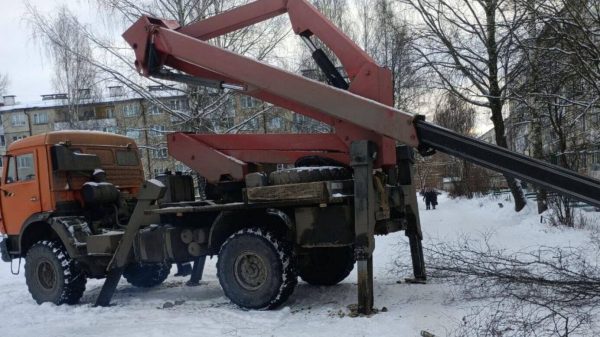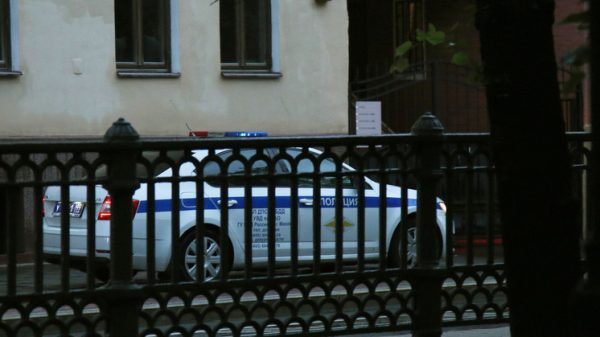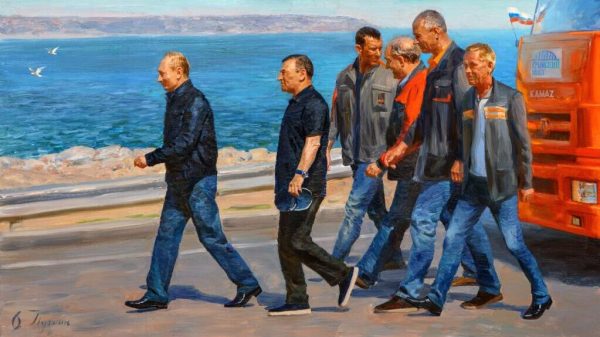
When William Sanchez and 11 of his family members contracted Covid-19 around Thanksgiving, his toddler’s temperature spiked, his nephew vomited for days, and his diabetic mom’s blood sugar moved like a rollercoaster.
“Everything you hear on the news about, you know, this virus, and how bad it is … everything they say about it, it’s like 10 times worse,” Sanchez said.
Hardest hit was his 72-year-old mother-in-law, who he prayed would not be turned away from a Los Angeles hospital because of dwindling capacity.
She was placed on a ventilator by Christmas morning, nearly a year into a public health crisis that had already claimed hundreds of thousands of victims in the US – and amid California’s deadliest surge so far.
“We should have learned, or we should have known,” said Sanchez, an organizer with the labor union Unite Here Local 11, which represents workers at hotels, restaurants, convention centers, airports and sports arenas in southern California and Arizona.
After months of warning, Covid’s carnage in his home state “just doesn’t make sense”, he said.
As corpses overwhelm funeral homes and hospitals confront the possibility of rationing care, California’s outbreak – an average of 38,955 new infections and about 381 deaths per day, according to the Los Angeles Times – has become a devastating and disproportionate tragedy for Latino families.
Although Latinos account for 38.9% of the state’s population, they represent a whopping 55.1% of positive cases and almost half of all deaths. In Los Angeles county, where more than 850,000 infections have been recorded, Latinos are succumbing to the virus at 2.5 times the rate of their white counterparts, the LA Times reported.
But “it’s really not about race and ethnicity”, cautioned Yvonne Maldonado, a professor of global health and infectious diseases at the Stanford University School of Medicine. “It’s about race and ethnicity as a surrogate for poverty and inequity.”

A bevy of chronic discrepancies dividing California’s haves and have-nots – such as pricey real estate that forces multigenerational households into cramped dwellings and a labor market that relegates a large swath of Black and brown people to public-facing, high-risk roles – has fueled the virus’s uneven spread.
The Golden state struggles with some of the highest levels of income inequality nationwide, while Latinos “are overrepresented in low-wage jobs and have higher unemployment rates,” according to the Public Policy Institute of California.
“Everything about this pandemic is really not new,” Maldonado said. “It’s really just laid bare the existing social and health inequities, and really amplified them.”
At Stanford Health Care’s Covid-19 outpatient treatment program, Maldonado sees entire carloads of infected families who are socioeconomically disadvantaged and lack the luxury of space to isolate from one another. She believes a number of the people her team has cared for – many of whom work frontline jobs such as construction and delivery services – have returned to work while sick, despite her advice to the contrary.
“Some of ’em said, ‘Look, I’m the only one working at home, and I have children. I have to keep working,’” she remembered.
Underresourced and overburdened
Residents of Santa Ana, a predominantly Latino city in southern California, have suffered almost 19% of Orange county’s Covid cases and nearly one-fifth of its fatalities, despite representing just over 10% of the general population.
In stark contrast with the region’s wealthy, suburban elite, the city’s residents stock grocery shelves or perform janitorial work at hospitals, then go home to overcrowded spaces. Meanwhile, pre-existing conditions such as obesity, diabetes and hypertension abound.
“All three of those things really converged,” said the mayor, Vicente Sarmiento, “and just aligned, and made things a lot more severe for us than the rest of the county.”
The city had been using federal relief money to provide low-barrier Covid-19 testing, but as funding expired, it was forced to discontinue the program just before Christmas. Ahead of the new year, Sarmiento was scrambling to negotiate a deal to bring back tests, even as the holiday season threatened yet another onslaught of infections.

“It’s gonna get worse before it improves,” Sarmiento said. “So I see the month of January flowing into February as being a very, very difficult time for those of us here in Santa Ana.”
When Luis Mier, an entrepreneur in the city, went for his first free test in November, he remembered it taking less than 30 minutes. After getting an initial positive result, he returned for three more tests, and by his final visit, the wait was well over an hour.
“Everything changed,” Mier said. “Everybody in the city wanted to get tested.”
Itchy skin, high fever, problems sleeping, loss of smell and taste: when Mier contracted the virus, he experienced a litany of symptoms that knocked him out for weeks. He couldn’t eat much of anything other than home remedies or Pedialyte, and he lost 17lb as his skin grew draggy and old.
“I never expected it to be as bad,” he admitted.
“If this would have caught me maybe like a year ago – where I wasn’t keeping an eye on my diabetes, or keeping an eye on my high blood pressure – it probably would have killed me.”
Vulnerable workers hit hard
For members of Unite Here Local 11, where Sanchez works, being lucky enough to still have a job in California’s foundering service industries means continually putting their lives in danger, catering to an unworried clientele searching for leisure.
The rest – an estimated 90% of members who suddenly lost their livelihoods – were already living paycheck to paycheck and are now desperately scrounging for gigs. They were cleaning houses, selling jewelry and blankets, or driving for Uber or Doordash, said Ada Briceño, the union’s co-president.
The pandemic struck Briceño’s family early last year, when her son dropped 16lb and endured a week of high fevers from what she assumes was Covid-19. It’s also wreaked havoc on the workers she represents, including one member who had to relearn how to walk after being hospitalized.
Briceño keeps a running list of confirmed union members who have died from the virus – 14 so far, 13 of whom were Latinos – though she readily admits that it’s probably incomplete.
“I don’t know when it’s gonna stop,” she said. “I just feel like everywhere I look, you know, either people are infected or have died.”
By 1 January, Sanchez’s mother-in-law remained on a ventilator. Other than his lingering cough and residual fatigue, the rest of the family had mostly recovered – at least physically.
“That’s one of the worst things that, you know, I can say I’ve lived through in my life, where it’s just that panic,” he said. “You’re scared. You’re scared, and you don’t know what to do.”



















































Свежие комментарии